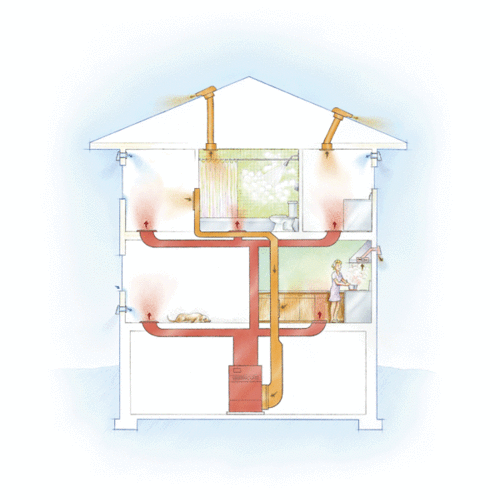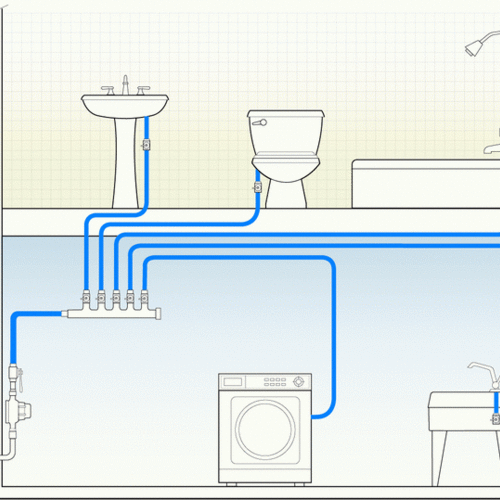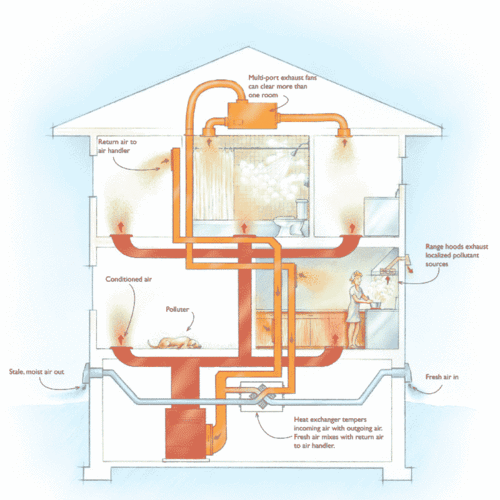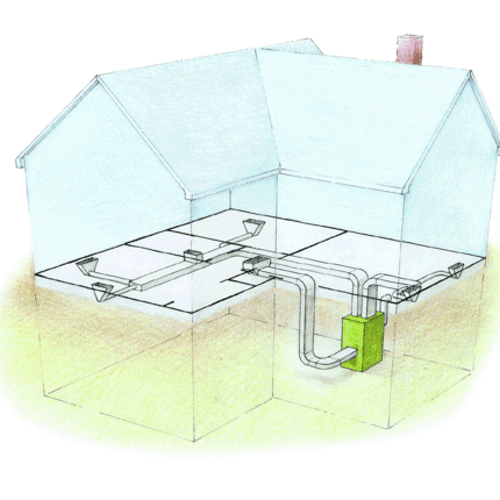ABOUT SUPPLY VENTILATION
Keeping Out Contaminants
Supply ventilation systems have two advantages over exhaust ventilation:
- Because the interior of the house is slightly pressurized, contaminants from the garage, basement and attic are less likely to enter the house. Back-drafting of combustion appliances is also less of a risk.
- Before it is introduced inside, fresh air can be filtered and dehumidified to remove pollen, dust, or other contaminants, potentially improving occupant comfort.
- Existing Ductwork or Dedicated Ductwork?
The most common type of supply ventilation system uses a home’s existing forced-air ductwork to distribute fresh ventilation air. This system, called a central-fan-integrated supply ventilation system, requires a passive duct to bring fresh outdoor air to the furnace’s return air plenum. (To learn more about central-fan-integrated supply ventilation systems, see “More About Supply Ventilation,” below.)
More rarely, a supply ventilation system has its own dedicated ductwork. In that case, a remote-mounted supply fan is ducted to grilles in the living room and bedrooms.

This article is only available to GBA Prime Members
Sign up for a free trial and get instant access to this article as well as GBA’s complete library of premium articles and construction details.
Start Free TrialAlready a member? Log in










0 Comments
Log in or become a member to post a comment.
Sign up Log in